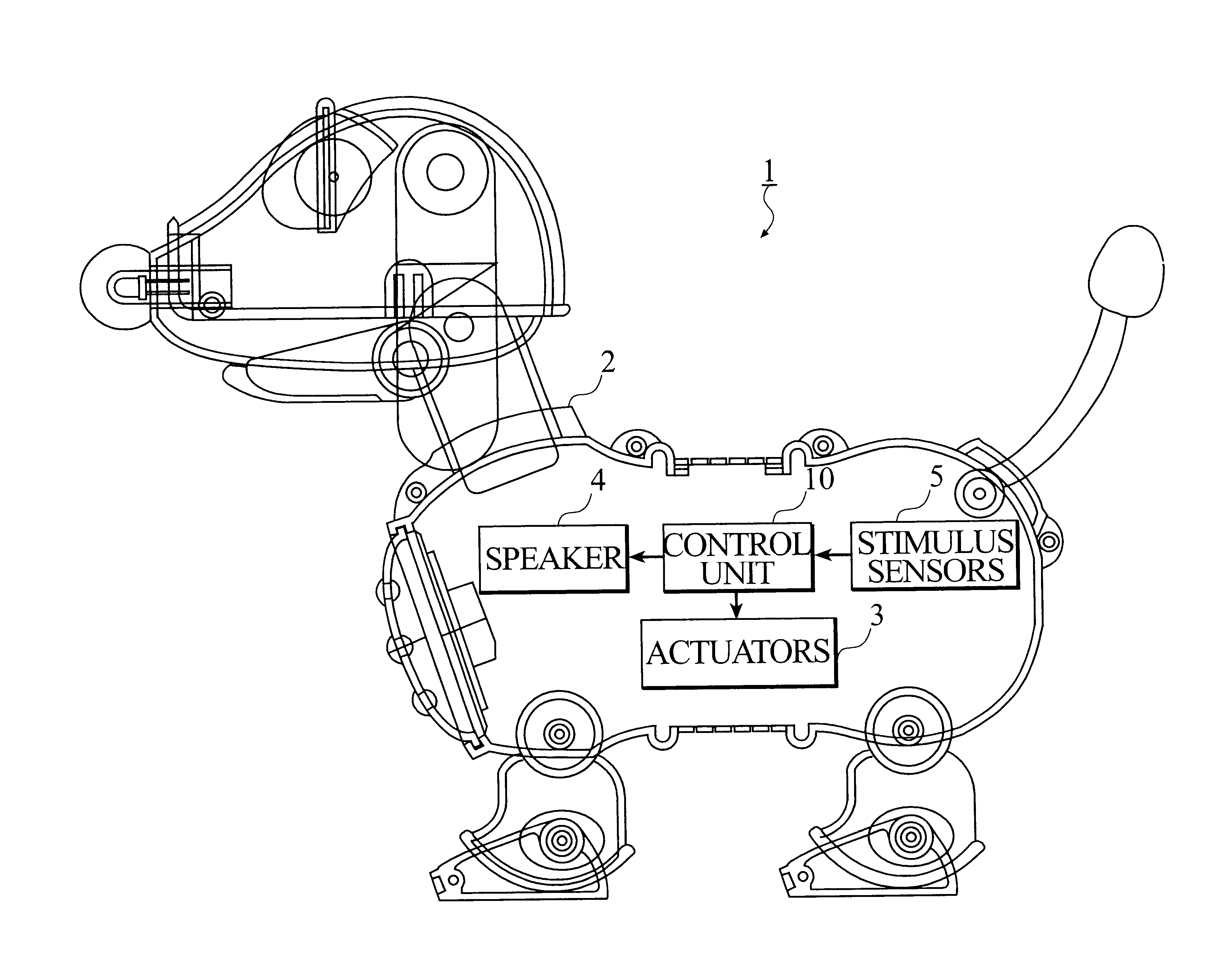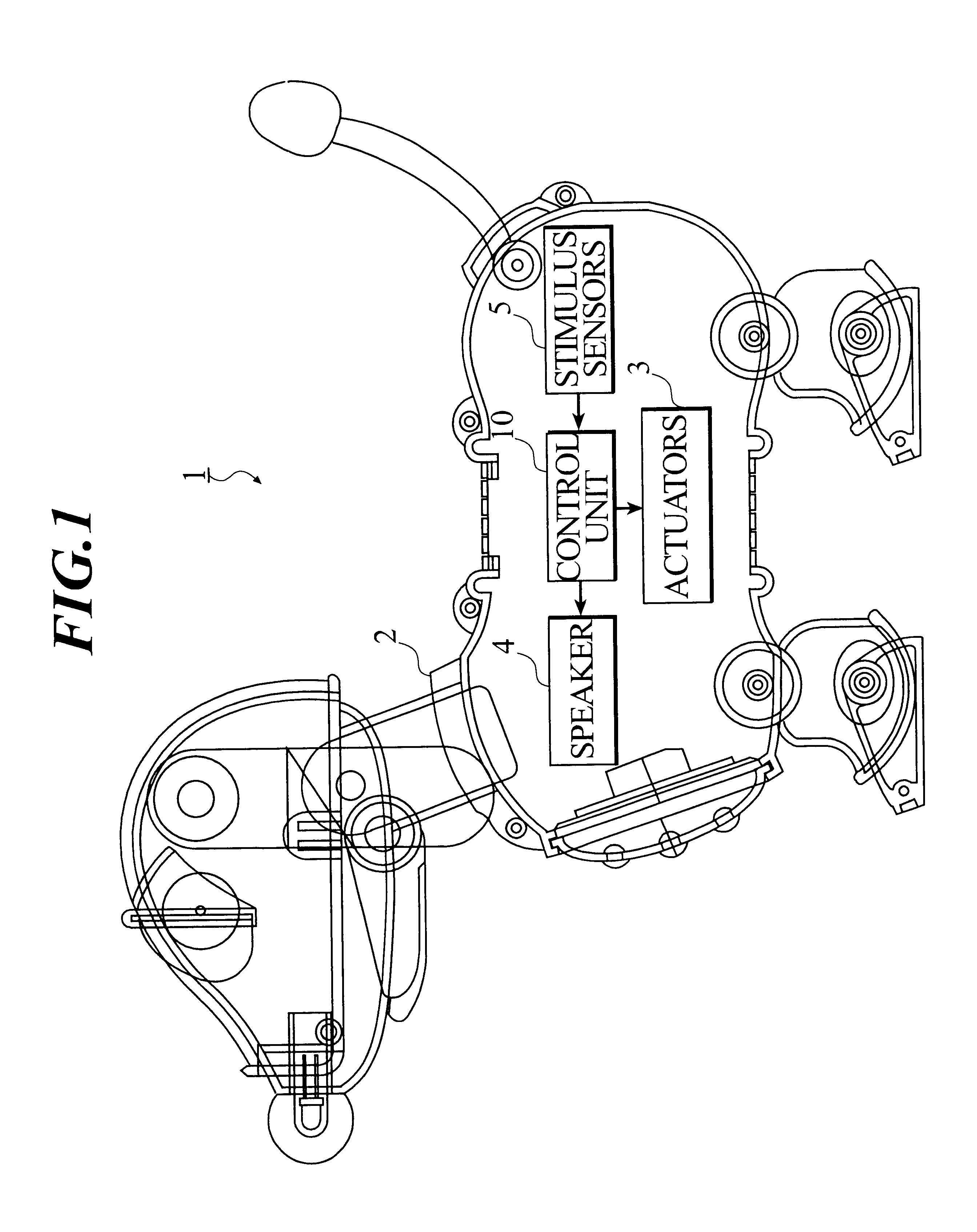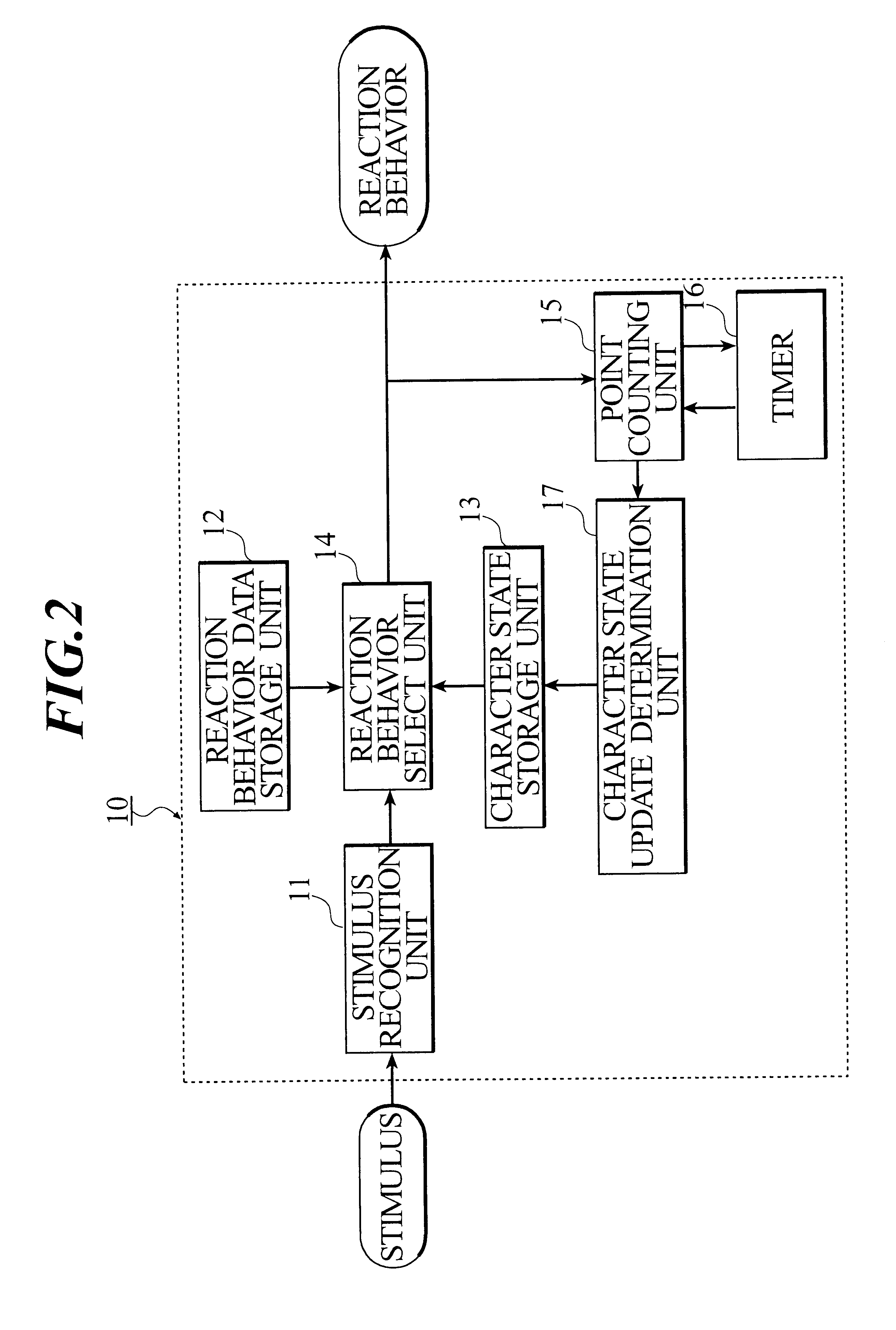Interactive toy, reaction behavior pattern generating device, and reaction behavior pattern generating method
a technology of reaction behavior and generating device, which is applied in the field of interactive toys, can solve the problems of difficult for users to predict the reaction behavior of imitated life objects, and difficult to predict the reaction behavior of imitated objects
- Summary
- Abstract
- Description
- Claims
- Application Information
AI Technical Summary
Benefits of technology
Problems solved by technology
Method used
Image
Examples
modified embodiment 1
(Modified Embodiment 1)
In the above-described embodiment of the present invention, an interactive toy having a form of a dog type robot is explained. However, naturally, it can be applied to interactive toys of other forms. Further, the present invention can be widely applied to "imitated life objects" including a virtual pet, which is incarnated by software, or the like. An applied embodiment of a virtual pet is described below.
A virtual pet is displayed on a display of a computer system by carrying out a predetermined program. Then, means for giving stimulus to the virtual pet is prepared. For example, an icon (a lighting switch icon or a bait icon or the like) displayed on a screen is clicked, so that a light stimulus or bait can be given to the virtual pet. Further, a voice of a user may be given as a sound stimulus through a microphone connected to the computer system. Moreover, with operation of a mouse, it is possible to give a touch stimulus by moving a pointer to a predeter...
modified embodiment 2
(Modified Embodiment 2)
In the above-described embodiment of the present invention, a stimulus is classified into two categories, a contact stimulus (a touch stimulus) and a non-contact stimulus (a sound stimulus and a light stimulus). Then, the total value of the action points caused by the contact stimulus and the total value of the action points caused by the non-contact stimulus are calculated separately. However, the non-contact stimulus may be further classified into the sound stimulus and the light stimulus, and the total values caused by each stimulus may be calculated separately. Thereby, three total values corresponding to the touch stimulus, the sound stimulus, and the light stimulus may be calculated, and the character parameters XY in the third stage (the human stage) may be determined by making these three total values into input parameters. Thereby, the variation of transition of change related to the character of the imitated life object can be made much more complica...
modified embodiment 3
(Modified Embodiment 3)
In the above-described embodiment of the present invention, the action point is classified by the contents (the kinds) of the inputted stimulus. However, other classifying techniques may be used. For example, a technique of classifying an action point according to the kinds of an output action can be considered. Concretely, the output time of the speaker 4 is counted, and the action point corresponding to the counted time is calculated. Similarly, the output time of the actuators 3 is counted, and the action point corresponding to the counted time is calculated. Then, each total value of the action points is used as the first total value VTX and the second total value VTY.
Thus, according to the present invention, the total value related to the generated action point caused by the reaction behavior (output) to a stimulus, is calculated. Then, the reaction behavior of an imitated life object is changed according to the total value. Therefore, it becomes difficul...
PUM
 Login to View More
Login to View More Abstract
Description
Claims
Application Information
 Login to View More
Login to View More - R&D
- Intellectual Property
- Life Sciences
- Materials
- Tech Scout
- Unparalleled Data Quality
- Higher Quality Content
- 60% Fewer Hallucinations
Browse by: Latest US Patents, China's latest patents, Technical Efficacy Thesaurus, Application Domain, Technology Topic, Popular Technical Reports.
© 2025 PatSnap. All rights reserved.Legal|Privacy policy|Modern Slavery Act Transparency Statement|Sitemap|About US| Contact US: help@patsnap.com



